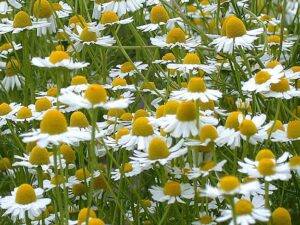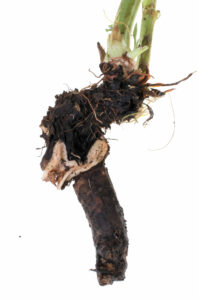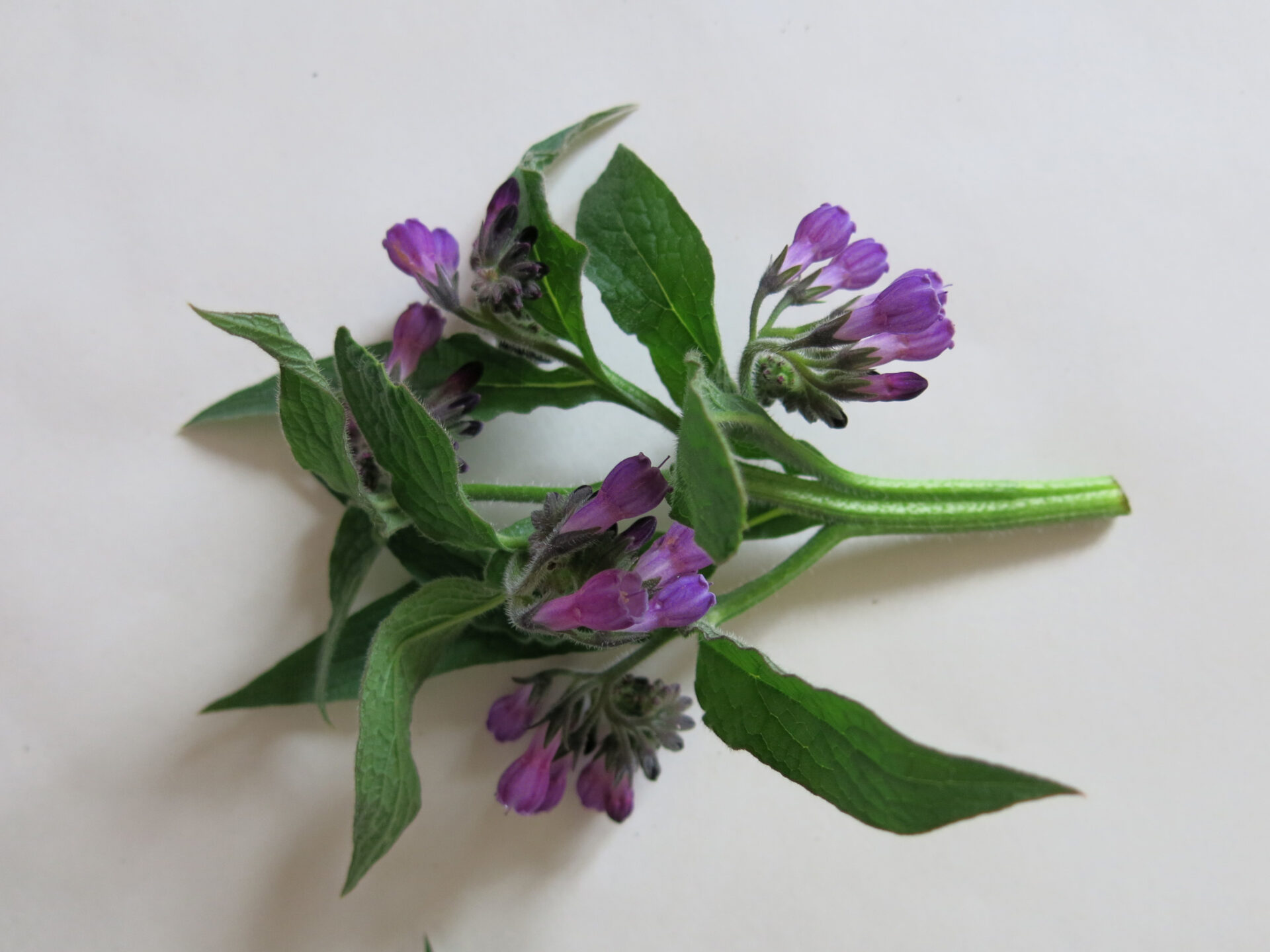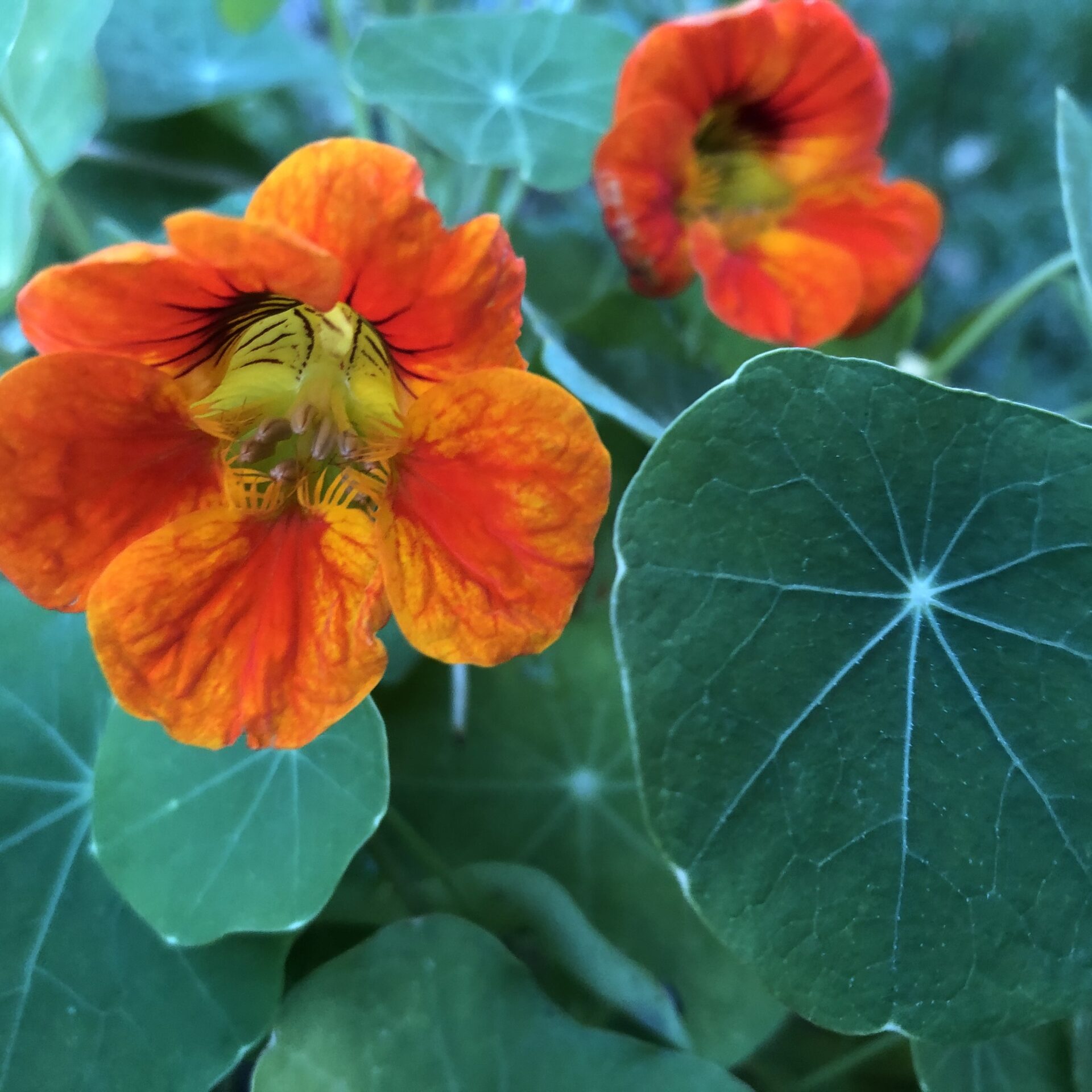These blog articles are herbal education resources, produced by the Seed Sistas. Gain insights and join us in the evolution of healthcare, please do leave a comment or question. Wellbeing empowerment for all…
Comfrey: The Secret Weapon For Thriving Herb Gardens
Comfrey — also known by its old English name “knitbone” — has long-been revered for its remarkable ability to aid in healing bone fractures and wounds. Its deep taproots were believed to reach down into the Earth’s depths, drawing up minerals and nutrients to heal the body. Today, comfrey continues to weave its magic in herb gardens, not only as a healer, but also as a guardian of soil health and plant vitality. Every gardener should grow comfrey! By planting comfrey in your herb garden and using its leaves to make nutrient-rich fertiliser, you can promote biodiversity, enrich soil, and ward off pests in your herb garden.
Promoting biodiversity and ecosystem health
 Comfrey aids biodiversity by attracting pollinators, providing habitat for beneficial insects, and supporting soil health, thus fostering a diverse and balanced ecosystem within your herb garden. In particular, comfrey plants, with their dense foliage and thick roots, provide shelter and habitat for various beneficial insects, such as, ladybugs, lacewings, and predatory beetles. These insects help control pest populations naturally, reducing the need for chemical pesticides. Comfrey also produces beautiful flowers that attract essential pollinators like bees and butterflies — these insects play a crucial role in pollinating herbs like basil, thyme, and lavender and increasing overall biodiversity. Bees, especially, are attracted to comfrey flowers and frequently visit gardens to collect nectar and pollen. This activity aids in supporting bee populations by providing essential food sources.
Comfrey aids biodiversity by attracting pollinators, providing habitat for beneficial insects, and supporting soil health, thus fostering a diverse and balanced ecosystem within your herb garden. In particular, comfrey plants, with their dense foliage and thick roots, provide shelter and habitat for various beneficial insects, such as, ladybugs, lacewings, and predatory beetles. These insects help control pest populations naturally, reducing the need for chemical pesticides. Comfrey also produces beautiful flowers that attract essential pollinators like bees and butterflies — these insects play a crucial role in pollinating herbs like basil, thyme, and lavender and increasing overall biodiversity. Bees, especially, are attracted to comfrey flowers and frequently visit gardens to collect nectar and pollen. This activity aids in supporting bee populations by providing essential food sources.
Nurturing herb garden soil
Comfrey fertiliser also enriches soil by providing a concentrated source of essential nutrients, including nitrogen, phosphorus, and potassium. The result? Herbs that grow faster, taste better, and thrive abundantly, ensuring a bountiful harvest in your garden. Incorporating the comfrey plant itself when growing your herb garden can also work wonders for the health and growth of your precious herbs. Thanks to its deep taproots, comfrey effortlessly draws nutrients from deep within the soil, which it later releases as it decomposes, nourishing the surrounding soil even more. This nutrient-rich organic matter acts as a natural fertiliser, boosting soil fertility, turbocharging microbial activity, and fostering healthy plant growth.
Companion planting 
Comfrey is also a great companion in herb gardens as it promotes growth and vitality. For instance, chamomile — known for its calming properties — thrives alongside comfrey, as the nutrient-rich soil provided by comfrey enhances chamomile’s growth and potency. Similarly, echinacea — prized for its immune-boosting effects — flourishes when planted near comfrey, as it receives ample nutrients and protection from pests. Also, consider planting comfrey near moisture-loving herbs like parsley or cilantro for practical herbalism; comfrey’s deep taproots help improve soil drainage, ensuring optimal growing conditions for all. Remember to harvest comfrey leaves regularly to use as mulch or compost, providing a continuous supply of nutrients to surrounding herbs.
Combat pests naturally
Comfrey fertiliser can also keep pests at bay, thanks to its pungent order that acts as a natural deterrent to certain pests like aphids, slugs, and caterpillars, effectively protecting delicate herbs, such as basil, mint, and parsley from infestations. The strong scent masks the attractive scents of these herbs, reducing the likelihood of pest infestations. Additionally, comfrey fertiliser promotes robust plant growth, equipping herbs like rosemary and thyme — which are particularly susceptible to pests and diseases due to their strong flavours and woody stems — with the strength to withstand pest attacks and resist diseases. This holistic approach to pest control not only addresses immediate concerns, but also fosters overall plant health and resilience.
 Planting comfrey in your herb garden
Planting comfrey in your herb garden
To plant comfrey in your herb garden, you’ll need to first obtain either comfrey crowns (root divisions) or cuttings. Crowns are typically more readily available from nurseries, while cuttings can be taken from established comfrey plants. Then, choose a sunny or partially-shaded spot in your garden with well-drained soil. Prepare the soil by loosening it, removing debris, and adding compost or aged manure for fertility. Then, dig a hole deep and wide enough to accommodate your comfrey crown or cutting, before placing the plant gently inside it, making sure the roots are spread out evenly. Then, backfill the hole with soil, pressing gently to secure the plant in place. After planting, water the comfrey thoroughly to help settle the soil around the roots and provide essential moisture for initial growth.
Making comfrey fertiliser

Before making your comfrey fertiliser, you’ll need to harvest the leaves — just before the plant flowers is usually the best time to do this. Ensure your chosen leaves are healthy and from mature plants. Cut the leaves with shears, leaving some still on the plant to continue growth. Then, chop the leaves up into smaller pieces, and place them in a container like a bucket or a barrel. Add a weight on top of the leaves, so as to compress them and release the juices. Let the leaves decompose for about 4-6 weeks, stirring occasionally. After the decomposition period, you’ll then need to strain the liquid using a sieve or cloth. The strained liquid is your comfrey fertiliser. Store the liquid fertiliser in a sealed container, away from direct sunlight. Keep in mind, before using the fertiliser, it’s necessary to dilute it — otherwise it risks burning or over-fertilising plants due to its high nutrient concentration. So, to dilute the fertiliser, simply mix it with water at a ratio of around ten parts water to one part comfrey liquid. Store the diluted mixture in a sealed container away from direct sunlight.
Comfrey is an invaluable asset in any herb garden which is why every gardener should plant comfrey. Both as a plant, for medicinal horticulture and as a fertiliser, this green powerhouse enriches the soil, promotes plant health, and supports a thriving ecosystem your herbs will love.
Guest Post written by Jackie Edwards:
“For most of her career, Jackie worked as a gardener – often on jobs within her local community. She also spent some time as a landscaper with the family business. Now she’s semi-retired she loves to read and write on horticultural matters (and sometimes delves into other topics too). In any free time she has, she still spends it outdoors – being walked by her two dogs Bertie and Bassett – oh, and occasionally her husband gets a look in too…”







